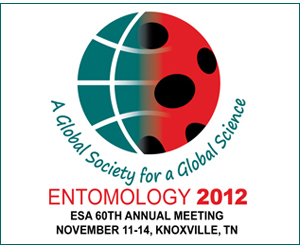North Central Branch Annual Meeting Online Program
Sublethal effects of hydroxamic acids on larvae of western corn rootworm, Diabrotica virgifera virgifera
Monday, June 4, 2012: 9:51 AM
Regents E (Embassy Suites)
Western corn rootworm is a major pest of corn production in U.S Corn Belt. Corn produces a number of defensive molecules to protect itself from insect herbivores. These include hydroxamic acids, especially DIMBOA, secondary metabolites with insecticidal properties. The sublethal effects of hydroxamic acids on western corn rootworm larvae were investigated using corn with a mutated nonfunctional bx1 gene, which encodes a key enzyme in the hydroxamic acid synthesis pathway. Western corn rootworm larvae were allowed to feed on seedlings of 428G, a homozygous bx1 mutant and its wild type parental line H88. The dry weight and head capsule width were measured to determine the growth and developmental stage. Total RNA was extracted from individual larvae and is being used to study differential gene expression larvae in response to hydroxamic acids.


